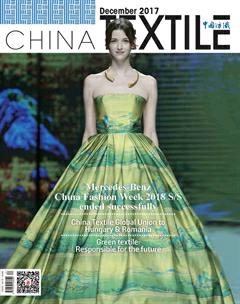The manufacturing and logistics center of Europe-Hungary
A few days ago, the delegation of China National Textile and Apparel Council visited and discussed with Dr. Livia Kokas Palicska - the president of AHLI and vice president of TMTE. Kokas expressed warm welcome to the delegation. In the discussion period, Kokas introduced the histories and recent developments of the textile and garment industry of Hungary. He still mentioned that the present Europe is also quite approved with the quality of the textile and garment in China. Moreover, he shared the dynamic conditions of the textile industries in other European countries.
Hungary is seated in the center of Europe. It is bordered with seven countries. It covers a national territorial area of 9,300 km2 and has a population of 9,856,000. It has superior geographical location, outstanding regional strength, improved fundamental facilities and high labor cost effectiveness. All these factors decide its status as the manufacturing base and logistics distribution center in Europe. It is an important pivot for Chinese enterprises to lever the European market and a bridge to connect the eastern and western markets. In The Belt and Road Forum for International Cooperation in May this year, Hungary established the overall strategic partner relationship with China.
Hungary has possessed rather complete and high level of textile industrial system in the socialism period. However, as the Fall of Communism in the 80s of the last century, its textile industry decreased rapidly and the traditional market is lost. A majority of the state enterprises went into liquidation and were replaced by numerous middle and small-sized enterprises. At present, Hungary has about 1,340 national registered textile companies. There are only 7 largescale enterprises with over 250 people. Among the 2,093 garment companies, there are only 12 largescale enterprises with over 250 people. In 2016, the total out-put value of the textile industry was Euro 360 million, in which the export occupied Euro 285 million. The total out-put value of the garment industry was Euro 320 million, in which the export occupied Euro 202 million.
Afterwards, the secretary general of China Textile Go Global Union and vice president of CCPIT TEX -Lin Yunfeng stated the development state, confronted challenge, pressure and development opportunity of the Chinese textile and garment industry to president KOKAS. Mr. Lin also invited president KOKAS sincerely to lead Hungary textile and garment enterprises to visit the exhibition to communicate in the joint exhibition period in the joint exhibition period in the March of the next year. He also expressed that he would like to introduce the best textile and garment education organizations in China to president KOKAS, so as to promote the development of the related industries of the two countries from the aspect of talent cultivation.endprint
As the logistics center in Europe, Hungary has the first national overseas economy and trade zone of China in European countries. CEO of CECZ - Wu Jiang introduced the construction and operation conditions of CECZ. The logistics park is the commercial and logistical service-oriented comprehensive park deployed by Chinas Ministry of Commerce in united according to the development model of “one district and several parks”. Its planned total investment is Euro 265 million and it has an opening area of 12,660,000 m2. Its logistics can reach the districts with the most intensive population (almost 240 million) and highest purchasing power in Europe.
The Xiang-Europe and Central Europe expresses launched in May, 27th, 2017 with one shuttle every week (Changsha-Budapest express) opened up the new way from China to European Union. They have become the new portal of China commodities to enter into European Union. In addition, they converged with COSCO Piraeus rail express in Budapest. The land and sea Silk Road has formed the enclosed loop. Hungary is not only the logistics center of the European trade. It can also be said as the spring board for domestic enterprises to enter into the eastern and western markets.
The delegation learned from the investigation that the textile industry in Hungary has week basis. Most of the yarns, fabrics and accessories are imported from foreign countries. As to the textile upstream enterprises in China, it is also a good cooperation opportunity. Hungary has outstanding regional strength. It covers the European market with the population of 500 million and has become the logistics center of Europe. Hungary has stable political situation, high mutual trust and it is friendly to China. It is the first European country to step into “The Belt and Road”. Its compiled “eastward openness” economic and diplomatic strategy has put forward a series of preferential policies for the foreign investors. Overseas enterprises can utilize CECZ, Xiang-Europe express railway and rail express to open the Central and Eastern Europe, so as to explore the Western European market gradually.endprint

